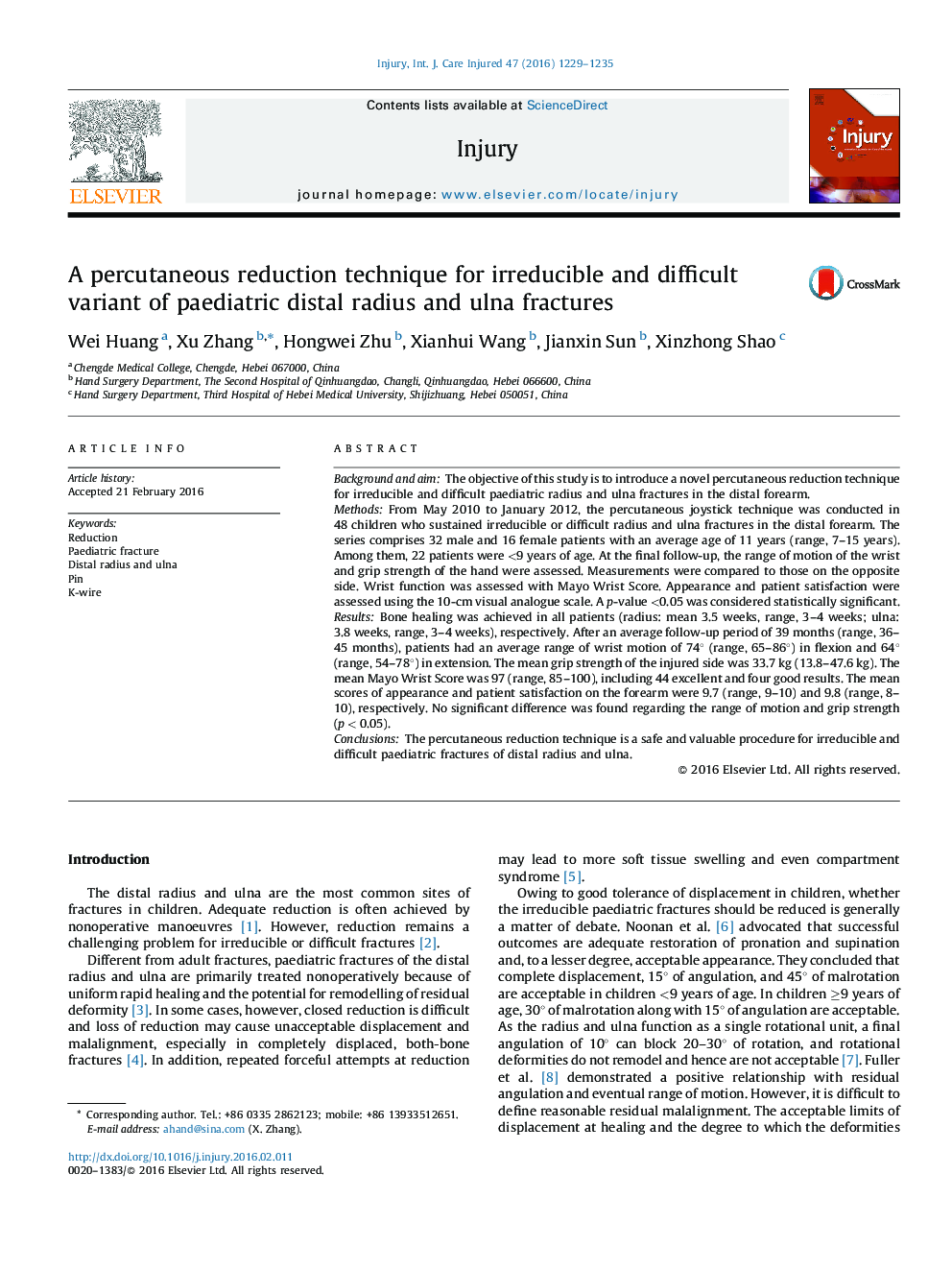| کد مقاله | کد نشریه | سال انتشار | مقاله انگلیسی | نسخه تمام متن |
|---|---|---|---|---|
| 3238838 | 1205975 | 2016 | 7 صفحه PDF | دانلود رایگان |
Background and aimThe objective of this study is to introduce a novel percutaneous reduction technique for irreducible and difficult paediatric radius and ulna fractures in the distal forearm.MethodsFrom May 2010 to January 2012, the percutaneous joystick technique was conducted in 48 children who sustained irreducible or difficult radius and ulna fractures in the distal forearm. The series comprises 32 male and 16 female patients with an average age of 11 years (range, 7–15 years). Among them, 22 patients were <9 years of age. At the final follow-up, the range of motion of the wrist and grip strength of the hand were assessed. Measurements were compared to those on the opposite side. Wrist function was assessed with Mayo Wrist Score. Appearance and patient satisfaction were assessed using the 10-cm visual analogue scale. A p-value <0.05 was considered statistically significant.ResultsBone healing was achieved in all patients (radius: mean 3.5 weeks, range, 3–4 weeks; ulna: 3.8 weeks, range, 3–4 weeks), respectively. After an average follow-up period of 39 months (range, 36–45 months), patients had an average range of wrist motion of 74° (range, 65–86°) in flexion and 64° (range, 54–78°) in extension. The mean grip strength of the injured side was 33.7 kg (13.8–47.6 kg). The mean Mayo Wrist Score was 97 (range, 85–100), including 44 excellent and four good results. The mean scores of appearance and patient satisfaction on the forearm were 9.7 (range, 9–10) and 9.8 (range, 8–10), respectively. No significant difference was found regarding the range of motion and grip strength (p < 0.05).ConclusionsThe percutaneous reduction technique is a safe and valuable procedure for irreducible and difficult paediatric fractures of distal radius and ulna.
Journal: Injury - Volume 47, Issue 6, June 2016, Pages 1229–1235
